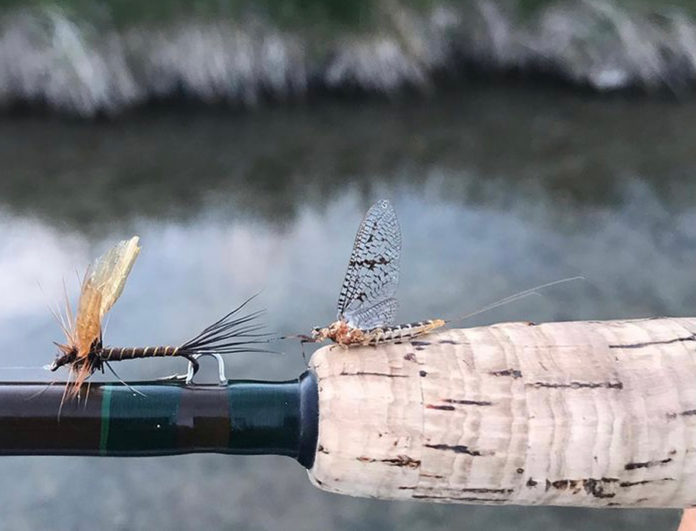Photos courtesy Jeremy Silvas
Mayflies are a crucial food source for a wide variety of fisheries, occupying various aquatic niches–from cold rivers to warm, still waters–in all 50 states. With over 600 species in the US alone, hatching from early spring through late fall, there is always a relevant mayfly species to imitate. But the US is a big place, so anglers’ experiences are likely to be quite different from one state to another. This post is part of an ongoing series that explores the great variety of mayfly hatches in different states, in order to give fly anglers a broader view of mayfly fishing across the country.
This week, our featured region is central Idaho. Famous for its technical spring-creek fishing, Idaho is home to dozens of different mayfly species, and to picky trout that sometimes key on minute details. Jeremy Silvas of Sun Valley Outfitters in Ketchum shares some specifics about important hatches to watch for, which flies to use, and some basic strategies to help ensure success. Hopefully this information will be useful not only for anglers in Idaho, but also for anyone who is seeking a more comprehensive understanding of mayflies.
1. What are some of the most important mayfly hatches in your region, and when do they typically start?

In the Sun Valley area, the most prolific and longest-duration hatch we have is the Baetis mayfly, which produces strong hatches from early spring until the snow starts piling up in November. These bugs typically range in size from 18 all the way down to 28 (and sometimes even smaller) but are nevertheless a main diet staple for trout throughout the state.
Our most famous hatch, without a doubt, is the brown drakes, which are particularly well-known on Silver Creek (Ephemera simulans). Typically beginning in early June, this hatch seems to draw every large fish to the surface, although it may only last for about a week or so. Every year, people show up from miles around for this evening spectacle .
2. What are some of your favorite local fly patterns/variants to imitate these mayflies in your region?

When fishing Baetis patterns, size is key. Casting a size 22 when the naturals are closer to 24 or 26 won’t produce much action here, especially on Silver Creek. When you’re casting such small flies, patterns with highly-visible elements make the whole experience a bit more enjoyable. Standard patterns like Hackle Stackers, Parachute Adams, and classic No Hackles in the right sizes can match these insects well, and can be easily modified with high-visibility materials. Specialty flies like Bryan Hostetler’s Tiny Baetis are perfect imitations for these diminutive bugs, and easy to see in small sizes.
Brown drakes are just the opposite: big and meaty. Dry flies in sizes 8 and 10 will match these low-light-loving mayflies quite well. Fish until the sun sets, then just keep fishing. Extended-body parachute brown drakes are standard fare, but during a hatch, it’s a good idea to have a wider selection of emergers, adults, and spinners. Fish quickly become educated by the many imitations that drift over their heads each evening, and will key into specific stages of the insect hatch, making them even harder to fool.
3. Tell us about a memorable fish or day you’ve had using one of the flies described above.

Some of my most vivid streamside memories are not even fishing memories, but rather sitting on the bank with good friends waiting for the drakes. Some days we sit and wait, and nothing happens, and some seasons, these days turn into whole bugless weeks. We often spend more time waiting on the drakes than we do actually fishing.
Typically, one of us arrives in the afternoon to secure a small stretch of the creek, then finds a place to sit. Just about the time the sun starts to dip below the horizon, the brown drake hatch could miraculously happen. From that point on, until as late as one wants to stay and cast into the darkness, the fish are eagerly feeding on big duns and spinners. Time the hatch just right, and fly fishing doesn’t get much better.
Credit: Source link































